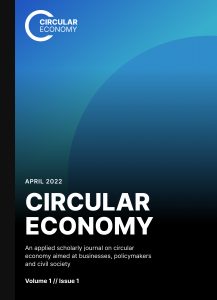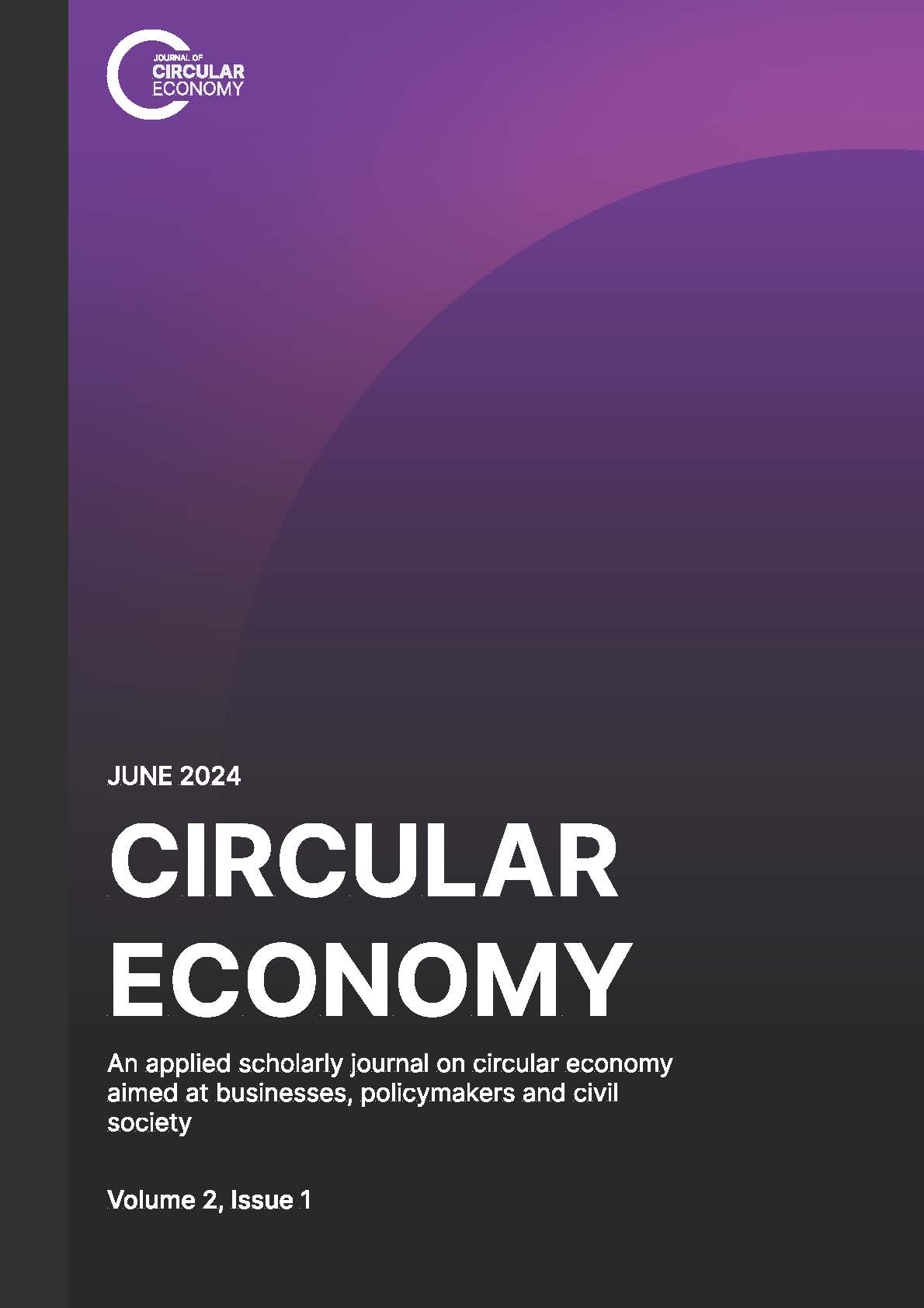Abstract
Due to an increased awareness among stakeholders of the construction industry’s detrimental environmental impacts, demand for circular and sustainable practices has increased significantly. The objective of this literature and industry scoping review is to analyze the current construction industry in the United States to determine emerging trends and developments in sustainable and circular design and construction, focusing on one of the concepts, Urban Mining, and its potential applications. In the context of this paper, Urban Mining is defined as the reclamation of materials, elements or components from existing decommissioned buildings which were not designed for deconstruction or adaptability with the goal to reuse (or recycle) these elements in new construction projects.
As this paper provides an outlook on technologies, materials, and practices that are emerging, there is a gap in available literature (reviewed or scientific sources) on the selected topic. Market reports, case study reports, and/or governmental and company websites are used to identify legislation, stakeholders, and changing practices pertinent to Urban Mining. By synthesizing deconstruction prospects for material groups and building components, gaps in Urban Mining practices are identified, including the documentation of building components, processing tools for reclaimed material, and technological, logistical, and legal infrastructures for reuse
Keywords
References
Abbott, A. (1996). Design for Disassembly and Environment [University of Rhode Island]. https://doi.org/10.23860/thesis-abbott-andrew-1996
Aldebei, F., & Dombi, M. (2021). Mining the Built Environment: Telling the Story of Urban Mining. Buildings, 11(9), Article 9. https://doi.org/10.3390/buildings11090388
Armstrong, B., & LaMore. (2018). Guide to Local Ordinances: Deconstruction and the Management of C&D Material Waste. Michigan State University. https://domicology.msu.edu/upload/GuidetoLocalOrdinances_May2018.pdf
Bluedorn, J., Hansen, N.-J. H., Noureldin, D., Shibata, I., & Tavares, M. M. (2022). Transitioning to a Greener Labor Market: Cross-Country Evidence from Microdata. International Monetary Fund. https://www.imf.org/en/Publications/WP/Issues/2022/07/22/Transitioning-to-a-Greener-Labor-Market-Cross-Country-Evidence-from-Microdata-521182
Brand, S. (1995). How Buildings Learn: What Happens After They’re Built. Penguin.
Brick Industry Association. (2023). Technical Notes on Brick Construction. https://www.gobrick.com/resources/technical-notes
Carbon Leadership Forum. (2020). What is a Buy Clean Policy? https://carbonleadershipforum.org/what-is-a-buy-clean-policy/
Cooper, D. R., & Allwood, J. M. (2012). Reusing Steel and Aluminum Components at End of Product Life. Environmental Science & Technology, 46(18), 10334–10340. https://doi.org/10.1021/es301093a
Cruz-Rios, F., & Grau, D. (2020). Design for Disassembly: An Analysis of the Practice (or Lack Thereof) in the United States. Construction Research Congress. https://ascelibrary.org/doi/epdf/10.1061/9780784482889.105
DeBrincat, G., & Babic, E. (2018). Re-thinking the life-cycle of architectural glass. ARUP.
Delta Institute. (2018). Deconstruction and Building Material Reuse.
Ernst, F., & Leutiger, P. (2023). Holcim & Cornell: Circular Construction (F. Heisel, Interviewer) [Zoom Conference].
Fritzberg, E., & Rimoldi, M. (2022). Understanding the International Green Construction Code (IgCC), the California Green Building Standards Code (CGBSC) & Implications for Building Projects. Retrieved July 12, 2023, from https://www.jdsupra.com/legalnews/understanding-the-international-green-6125494/
Forrest, J. (2021). The feasibility of recycling and reusing building materials found in single-family homes built after 1970 in Metro Vancouver. UBC Sustainability.
Ghisellini, P., Ncube, A., Casazza, M., & Passaro, R. (2022). Toward circular and socially just urban mining in global societies and cities: Present state and future perspectives. Frontiers in Sustainable Cities, 4. https://www.frontiersin.org/articles/10.3389/frsc.2022.930061
Guerra, B. C., & Leite, F. (2021). Circular economy in the construction industry: An overview of United States stakeholders’ awareness, major challenges, and enablers. Resources, Conservation and Recycling, 170, 105617. https://doi.org/10.1016/j.resconrec.2021.105617
Guy, B., & Ciarimboli, N. (2007). Design for Disassembly in the Built Environment. Pennsylvania State University.
Hartwell, R., & Overend, M. (2019). Unlocking the Reuse Potential of Glass Facade Systems. University of Cambridge. https://www.gft.eng.cam.ac.uk/system/files/documents/GPD_REBECCA.pdf
Hebel, D. E., & Heisel, F. (2022). Besser – Weniger – Anders Bauen: Kreislaufgerechtes Bauen und Kreislaufwirtschaft: Grundlagen – Fallbeispiele – Strategien. In Besser—Weniger—Anders Bauen: Kreislaufgerechtes Bauen und Kreislaufwirtschaft. Birkhäuser. https://doi.org/10.1515/9783035626346
Heisel, F., Farley-Thomas, A., Ciobanu, A., & McGranahan, J. (2023). Current and Emerging Sustainable Materials and Construction Concepts in the United States [dataset]. https://doi.org/10.13140/RG.2.2.28207.92321
Heisel, F., & Hebel, D. E. (2022). Building Capacity and Knowledge in the Local Economy. In Building Better—Less—Different: Circular Construction and Circular Economy (pp. 38–43). Birkhäuser. https://doi.org/10.1515/9783035626353-007
Heisel, F., & McGranahan, J. (2024). Enabling Design for Circularity with Computational Tools. In C. De Wolf, S. Çetin, & N. M. P. Bocken (Eds.), A Circular Built Environment in the Digital Age (pp. 97–110). Springer International Publishing. https://doi.org/10.1007/978-3-031-39675-5_6
Heisel, F., McGranahan, J., & Boghossian, A. (2022). ScanR: A composite building scanning and survey method for the evaluation of materials and reuse potentials prior to demolition and deconstruction. IOP Conference Series: Earth and Environmental Science, 1078(1), 012012. https://doi.org/10.1088/1755-1315/1078/1/012012
Heisel, F., McGranahan, J., Ferdinando, J., & Dogan, T. (2022). High-resolution combined building stock and building energy modeling to evaluate whole-life carbon emissions and saving potentials at the building and urban scale. Resources, Conservation and Recycling, 177, 106000. https://doi.org/10.1016/j.resconrec.2021.106000
Heisel, F., McGranahan, J., Lucas, A., Cohen, D., & Stone, G. (2023). Carbon, economics, and labor: A case study of deconstruction’s relative costs and benefits compared to demolition. Journal of Physics: Conference Series, 2600, 192003. https://doi.org/10.1088/1742-6596/2600/19/192003
Iacovidou, E., & Purnell, P. (2016). Mining the physical infrastructure: Opportunities, barriers and interventions in promoting structural components reuse. Science of The Total Environment, 557–558, 791–807. https://doi.org/10.1016/j.scitotenv.2016.03.098
IMT. (2023) Map: U.S. City, County, and State Policies for Existing Buildings: Benchmarking, Transparency and Beyond. https://www.imt.org/resources/map-u-s-building-benchmarking-policies/
Kavanagh, B. (2023). Senate Bill S8614: Establishes Standards for the Reuse of Deconstructed Building Materials. https://www.nysenate.gov/legislation/bills/2023/S8614.
Kolomatsky, M. (2020). Converting Factories Into Homes. New York Times. https://www.nytimes.com/2020/10/01/realestate/converting-factories-into-homes.html
Koutamanis, A., Van Reijn, B., & Van Bueren, E. (2018). Urban mining and buildings: A review of possibilities and limitations. Resources, Conservation and Recycling, 138, 32–39. https://doi.org/10.1016/j.resconrec.2018.06.024
Logan, K. (2019). Renovate, retrofit, reuse: Uncovering the hidden value in America’s existing building stock. The American Institute of Architects. https://content.aia.org/sites/default/files/2019-07/RES19_227853_Retrofitting_Existing_Buildings_Report_Guide_V3.pdf
MacBride. (2012). Recycling Reconsidered: The Present Failure and Future Promise of Environmental Action in the United States. Biblio. https://www.biblio.com/book/recycling-reconsidered-present-failure-future-promise/d/1430233981
Marshall, D. J. M. (2019). Unmaking architecture: Holding patterns for misfit matter [Thesis, Massachusetts Institute of Technology]. https://dspace.mit.edu/handle/1721.1/124040
Mhatre, P., Panchal, R., Singh, A., & Bibyan, S. (2021). A systematic literature review on the circular economy initiatives in the European Union. Sustainable Production and Consumption, 26, 187–202. https://doi.org/10.1016/j.spc.2020.09.008
Milios, L. (2021). Overarching policy framework for product life extension in a circular economy—A bottom‐up business perspective. Environmental Policy and Governance. https://onlinelibrary.wiley.com/doi/full/10.1002/eet.1927
Nakamura, T., & Halada, K. (2015). Potential of Urban Mine. In T. Nakamura & K. Halada (Eds.), Urban Mining Systems (pp. 7–29). Springer Japan. https://doi.org/10.1007/978-4-431-55075-4_2
Park, J. (2017). A Review of Urban Mining in the Past, Present and Future. 2(2).
Pozzi, L. E. (2019). Design for Disassembly with Structural Timber Connections. Delft University.
Redling, A. (2021). New York bridge project utilizes recycled stone. Construction & Demolition Recycling. https://www.cdrecycler.com/news/new-york-bridge-recycling-taconic-state-parkway/
Ritchie, T. (1971). CBD-138. On Using Old Bricks in New Buildings—NRC-IRC. National Research Council Canada. Retrieved July 12, 2023, from http://web.mit.edu/parmstr/Public/NRCan/CanBldgDigests/cbd138_e.html
Salama, W. (2017). Design of concrete buildings for disassembly: An explorative review. International Journal of Sustainable Built Environment, 6(2), 617–635. https://doi.org/10.1016/j.ijsbe.2017.03.005
Silverstein, S. A. (2008). APPLYING “DESIGN FOR DISASSEMBLY” TO CONNECTION DESIGN IN STEEL STRUCTURES. Civil and Environmental Engineering.
Smith, M. J. (2012). An investigation into the strength properties of reclaimed timber joists [Doctoral, Northumbria University]. https://nrl.northumbria.ac.uk/id/eprint/21436/
StoneCycling. (2023). StoneCycling: Sustainable Building Materials for Construction. Retrieved October 11, 2023, from https://www.stonecycling.com/
Strain, L. (2017). 10 steps to reducing embodied carbon—AIA. The American Institute of Architects. Retrieved July 17, 2023, from http://blog.siegelstrain.com/2017/03/
Sweeney, S. (2021). Post-Pandemic Utilization of Office to Residential Adaptive Reuse Strategies in Cities. https://doi.org/10.17615/qb6j-vx05
US DOE. (2023). BECP Status of State Energy Code Adoption. (2023). US Department of Energy. https://public.tableau.com/views/BECPStatusofStateEnergyCodeAdoptionWeb/ResidentialPortal?:language=en-US&:display_count=n&:origin=viz_share_link?:showVizHome=no&:embed=true
US DOS (2022).The Montreal Protocol on Substances That Deplete the Ozone Layer. United States Department of State. Retrieved October 11, 2023, from https://www.state.gov/key-topics-office-of-environmental-quality-and-transboundary-issues/the-montreal-protocol-on-substances-that-deplete-the-ozone-layer/
US EPA, O. (2015). Chemicals under the Toxic Substances Control Act (TSCA) [Collections and Lists]. https://www.epa.gov/chemicals-under-tsca
US EPA, O. (2023). Construction and Demolition Debris: Material-Specific Data [Collections and Lists]. https://www.epa.gov/facts-and-figures-about-materials-waste-and-recycling/construction-and-demolition-debris-material
Vefago, L. H. M., & Avellaneda, J. (2013). Recycling concepts and the index of recyclability for building materials. Resources, Conservation and Recycling, 72, 127–135. https://doi.org/10.1016/j.resconrec.2012.12.015
Verhagen, T. J., Sauer, M. L., van der Voet, E., & Sprecher, B. (2021). Matching Demolition and Construction Material Flows, an Urban Mining Case Study. Sustainability, 13(2), Article 2. https://doi.org/10.3390/su13020653
Wachter, S. M. (2000). A GUIDE TO DECONSTRUCTION. US Department of Housing and Urban Development.
Washington State Legislature. (2020). WAC 51-51-0602: Section R602-Wood Wall Framing. https://apps.leg.wa.gov/wac/default.aspx?cite=51-51-0602.


